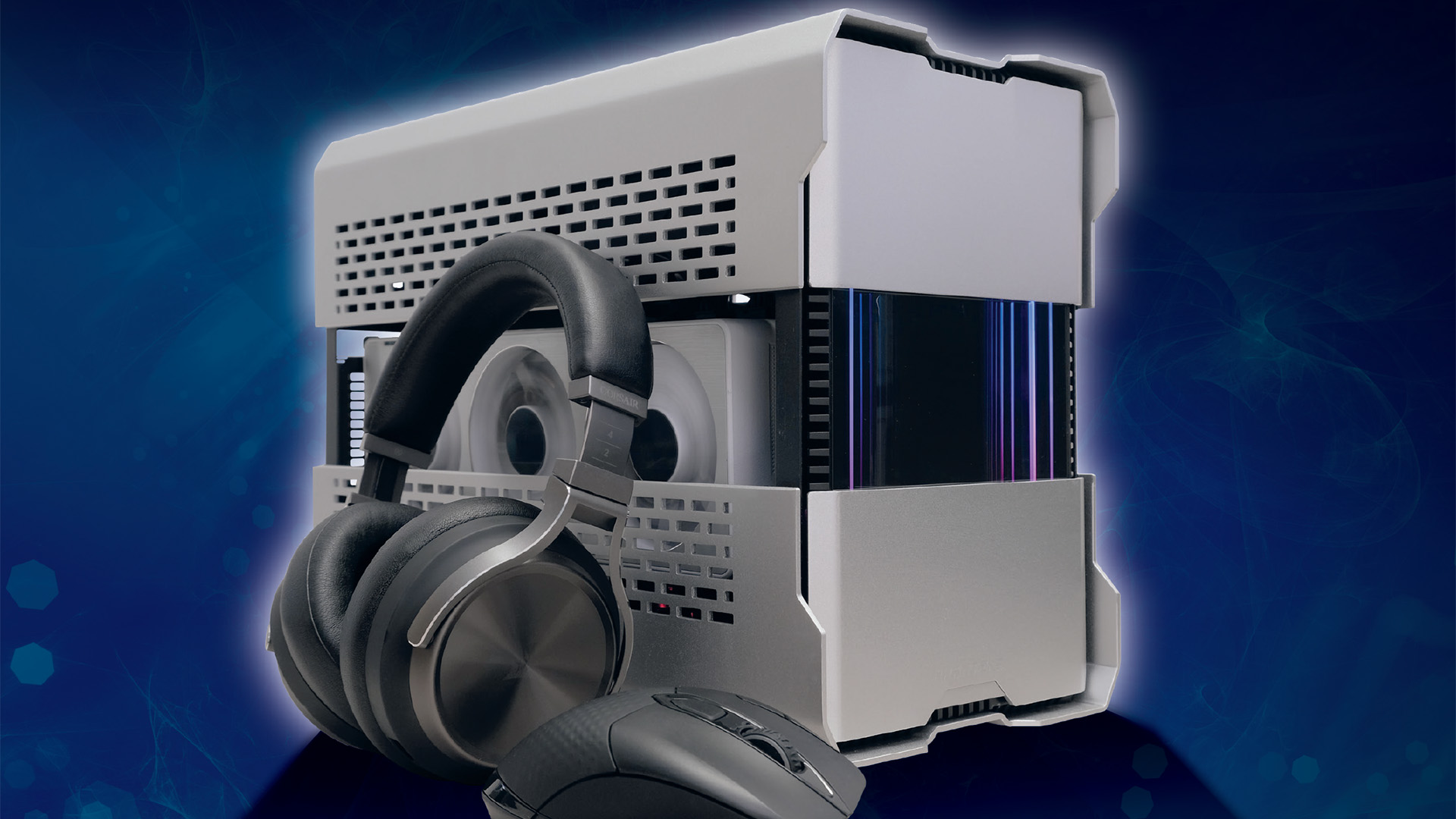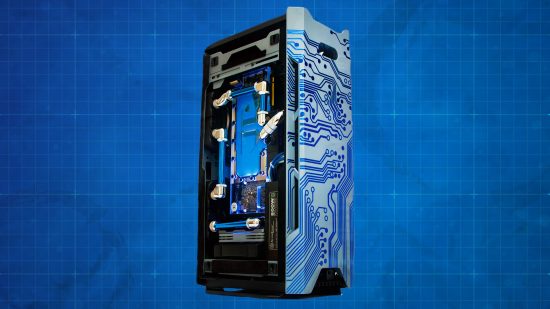Building a mini-ITX PC is no fun if it isn’t a challenge. That’s the conclusion I’ve come to after spending many moments pondering why I’m such a huge fan of mini-ITX systems. There are other factors, of course. Moving into a bigger house has meant having a bigger office and far less of a need to maximize desk or floor space by downsizing my PC. Nevertheless, my two main systems I’ve used since moving have both been mini-ITX.
I think it’s fair to say that it’s more than just a space-saving exercise. I hate waste and, for me, if you have a single graphics card and no other PCIe devices, along with two sticks of RAM, you really don’t need a massive ATX case.
Unlike a car, there’s no situation that might need more space, such as bringing home a bunch of DIY materials or throwing a bike in the back. Our PCs remain fairly static in terms of specifications, and upgrades usually focus on core components such as CPUs and graphics cards that don’t generally get larger with each generation.
The best graphics cards do, of course, come in all shapes and sizes, but mini-ITX cases are usually able to house even the large models, although triple-slot cards may lop a few cases from that list. Overall, though, you can house a PC in a good mini-ITX case that’s just as powerful as one in an ATX case in the vast majority of situations.
Still, it’s about much more than just size or wasted space for me. Building a mini-ITX PC is challenging – in a good way. It’s been challenging ever since I began using them, back when mini-ITX motherboards had integrated CPUs.

Making sure there’s enough cooling is still a primary concern today, along with issues such as graphics card compatibility and water-cooling support. Once you’ve built dozens of ATX PCs, you can develop a craving for more of a challenge.
When it comes to small-to-medium-size mini-ITX cases, you need to pick each component carefully. Even a memory module’s height can play a part, depending on the cooler you’ll be using, and the situation becomes even more complicated when you add water-cooling systems.
This is a challenge I relish, though, and it’s the main reason I’ve stuck with mini-ITX PCs for so long. It’s fun and hugely rewarding, even if there are a lot of compatibility issues and consequences if you get it wrong. However, I don’t think building a mini-ITX PC should necessarily be easy.
Cases such as the Ssupd Meshlicious do make it incredibly easy to build an air-cooled or water-cooled mini-ITX PC, and in a relatively compact case. However, the result is a bunch of copycat clones with similar cooling arrangements and very little originality. Delve deeper into small form factor Facebook groups, though, and you see much more interesting builds in other cases.
I love the fact that mini PCs are becoming more popular, but the original appeal – the challenge of building a custom, tiny, powerful PC – feels like it’s being diluted by cases such as the Meshlicious. It will undoubtedly bring new people into the niche, though, and that’s something I always like to see. It’s our recommended mini-ITX case for plenty of good reasons – I just prefer more of a challenge.
If you want to accept Antony’s challenge, and have a go at building a tiny gaming PC, check out our guide to the best PC case to use. If you’d rather take the slightly easier route of building a standard ATX PC, make sure you read our full guide on how to build a gaming PC, where we take you through every step of the process.
This post originally appeared on Custom PC, which has been covering amazing setups for over 20 years and is now part of PCGamesN. If you’re looking for ideas on your next build, make sure to join our Facebook group where you can tap into the knowledge of more than 500k members.
